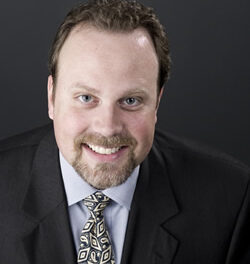Conductor Daniel Meyer has worked his magic once again in this last concert of the Asheville Symphony Orchestra’s season, directing a riveting performance of what many music historians call the most important composition of the twentieth century, Stravinsky’s Le sacre du printemps (The Rite of Spring). In keeping with the French theme of the concert, the program included Gabriel Fauré’s Pavane, Op. 50, performed in its choral version with the members of the Asheville Symphony Chorus (directed by Michael Lancaster), and the Saint-Saëns’ Concerto No. 1 in A minor for cello and orchestra, Op. 33 with soloist Joshua Roman. In performing the Stravinsky, the Asheville Symphony has joined the number of elite orchestras around the world who not only celebrate the 100th anniversary of this difficult work’s premier, but who can actually play it.
Of course, a music director does not randomly choose such an iconic work, nor does an orchestra arrive at this high level of performance overnight, and those of us who have attended the symphony over time have been gratified to hear the orchestra grow toward this moment. The work is fiendishly difficult. The orchestra is, in a sense, deconstructed repeatedly in Stravinsky’s soloistic treatment of the ensemble, and those with solos are frequently required to play in the extreme registers of their instruments. As in the works of Bach, the piece is relentless and full of “big moments,” and in Meyer’s assessment, the big moments keep coming with little relief. The concentration required not only to execute the parts, but to shape the work in ensemble is huge. Naturally, the conductor is in the heart of the artistic storm, and his tasks are huge — eyes on the score, eyes on the players; clearly cue the soloists, the sections, the whole; conduct varying beat patterns as the meter constantly shifts; keep a sense of how the varying sections of music, each so different in character, contribute toward a sense of the whole work. Above all, maintain an unflagging rhythmic sense from which the other sonic elements emanate, as if from primal bedrock. Meyer outdid himself in all these endeavors, and miraculously managed to convey a wonderful sense of energy without leaping off the podium. It was a stunning tour de force, and simply wonderful to watch. It was also an incomparable experience to hear the music live, and to hear anew various elements I hadn’t picked up in recordings. Every section was acknowledged with bows, and with a huge standing ovation from the house.
Setting the stage for this explosive closer was French music reflecting the romantic side of the style spectrum, beginning with the gentlest and most sensuous little miniature, Fauré’s Pavane. Composed in 1887 for a small orchestra, the work was later revised to include verses by Robert Montesquiou, a cousin of the composer’s patron. The result is an intoxicating mix of delicate timbres which was exquisitely rendered by both chorus and orchestra.
Just before intermission was the Saint-Saëns cello concerto. Saint-Saëns (also Fauré’s teacher) reacted to the innovations of Wagner and Liszt, and like Brahms, embraced the ideals of neo-classicism. Something of a nationalist, he was a member of the Société Nationale de Musique which promoted the “Ars Gallica” (French art) and composed music in response to the demand for new music by French composers. The concerto’s three movements are performed without pauses and provide ample opportunities for displays of virtuosity and impassioned lyricism. Joshua Roman, an Oklahoma City native in his late twenties, is an up-and-coming artist with an impressive performance resume. He is a poised and serious player with impressive technical chops and incredibly accurate intonation. There were many fine moments in this performance, especially in the passagework which frequently ranges all over the instrument. What I wanted more of was a deeper attention to the expressive range of the piece. Roman did some of his most nuanced playing in his encore, Fauré’s “Après un rêve”* (After a dream), with the orchestra.
The concert, sponsored by the Layden Family Foundation, with Ron and Nancy Edgerton sponsoring Roman’s appearance, was recorded for re-broadcast by WCQS on September 17, 2013 at 10 a.m. and September 19, 2013 at 8 p.m.
*Title of encore corrected on 5/14/13











